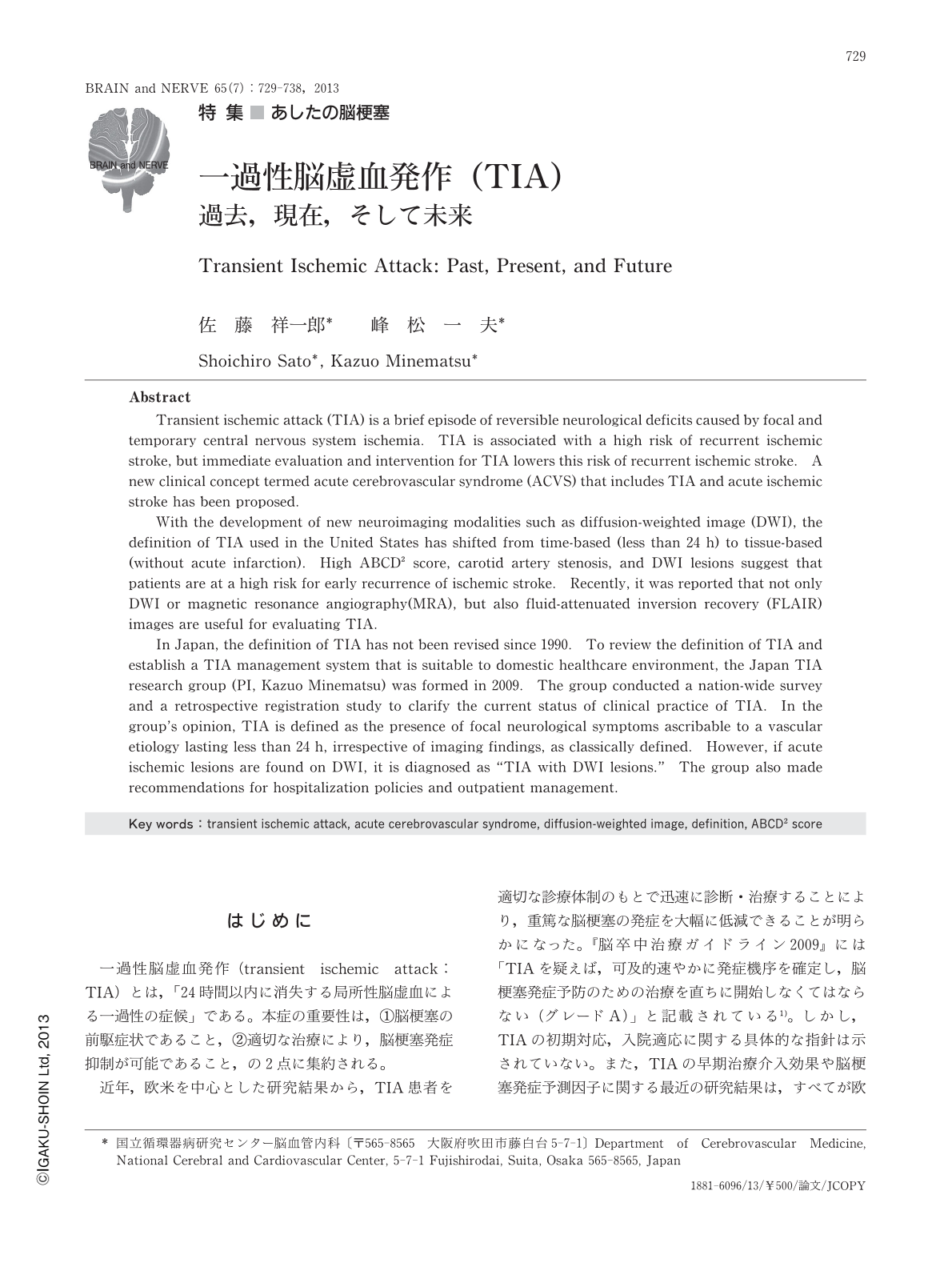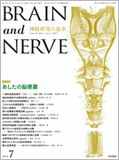Japanese
English
- 有料閲覧
- Abstract 文献概要
- 1ページ目 Look Inside
- 参考文献 Reference
はじめに
一過性脳虚血発作(transient ischemic attack:TIA)とは,「24時間以内に消失する局所性脳虚血による一過性の症候」である。本症の重要性は,①脳梗塞の前駆症状であること,②適切な治療により,脳梗塞発症抑制が可能であること,の2点に集約される。
近年,欧米を中心とした研究結果から,TIA患者を適切な診療体制のもとで迅速に診断・治療することにより,重篤な脳梗塞の発症を大幅に低減できることが明らかになった。『脳卒中治療ガイドライン2009』には「TIAを疑えば,可及的速やかに発症機序を確定し,脳梗塞発症予防のための治療を直ちに開始しなくてはならない(グレードA)」と記載されている1)。しかし,TIAの初期対応,入院適応に関する具体的な指針は示されていない。また,TIAの早期治療介入効果や脳梗塞発症予測因子に関する最近の研究結果は,すべてが欧米のものであり,わが国でのTIAに関する大規模な臨床研究はほとんどなかった。このような背景から,2009年に,厚生労働科学研究費補助金「一過性脳虚血発作(TIA)の診断基準の再検討,ならびにわが国の医療環境に則した適切な診断・治療システムの確立に関する研究」班(研究代表者:峰松一夫。以下,TIA研究峰松班と略す)が組織され,わが国の医療環境に即したTIA診療システムの改革,再構築が模索されている。
本稿では,現在抜本的な見直しがなされつつあるTIAの定義,原因,症候,画像診断,医療体制について,過去の研究から今後の展開までを概説する。
Abstract
Transient ischemic attack (TIA) is a brief episode of reversible neurological deficits caused by focal and temporary central nervous system ischemia. TIA is associated with a high risk of recurrent ischemic stroke, but immediate evaluation and intervention for TIA lowers this risk of recurrent ischemic stroke. A new clinical concept termed acute cerebrovascular syndrome (ACVS) that includes TIA and acute ischemic stroke has been proposed.
With the development of new neuroimaging modalities such as diffusion-weighted image (DWI), the definition of TIA used in the United States has shifted from time-based (less than 24 h) to tissue-based (without acute infarction). High ABCD2 score, carotid artery stenosis, and DWI lesions suggest that patients are at a high risk for early recurrence of ischemic stroke. Recently, it was reported that not only DWI or magnetic resonance angiography(MRA), but also fluid-attenuated inversion recovery (FLAIR) images are useful for evaluating TIA.
In Japan, the definition of TIA has not been revised since 1990. To review the definition of TIA and establish a TIA management system that is suitable to domestic healthcare environment, the Japan TIA research group (PI, Kazuo Minematsu) was formed in 2009. The group conducted a nation-wide survey and a retrospective registration study to clarify the current status of clinical practice of TIA. In the group's opinion, TIA is defined as the presence of focal neurological symptoms ascribable to a vascular etiology lasting less than 24 h, irrespective of imaging findings, as classically defined. However, if acute ischemic lesions are found on DWI, it is diagnosed as "TIA with DWI lesions." The group also made recommendations for hospitalization policies and outpatient management.

Copyright © 2013, Igaku-Shoin Ltd. All rights reserved.


